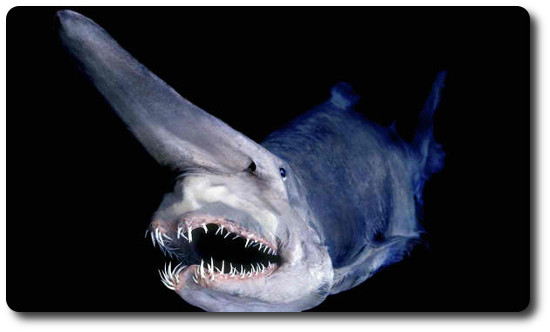Mitsukurina owstoni also known as goblin shark is a fan of darkness, it does not like sunlight maybe that's why some people refer to it as vampire sharks. I do refer to it as seanicorn from the word unicorn. They feed on creatures deep down in the ocean like crabs, sting ray, etc.
When approaching prey, their jaw goes out and with a sucking motion they draw the into their mouths with powerful teeth waiting to crunch! The Goblin Shark’s long, slender, exceptionally sharp fang-like teeth are connected to their protruding yet extremely soft and delicate jaws.
When approaching prey, their jaw goes out and with a sucking motion they draw the into their mouths with powerful teeth waiting to crunch! The Goblin Shark’s long, slender, exceptionally sharp fang-like teeth are connected to their protruding yet extremely soft and delicate jaws.
The jaws can protrude during eating,giving the goblin a very unusual look. This elongated snout may contain electrosensory canals. Below is a video on our guest...



